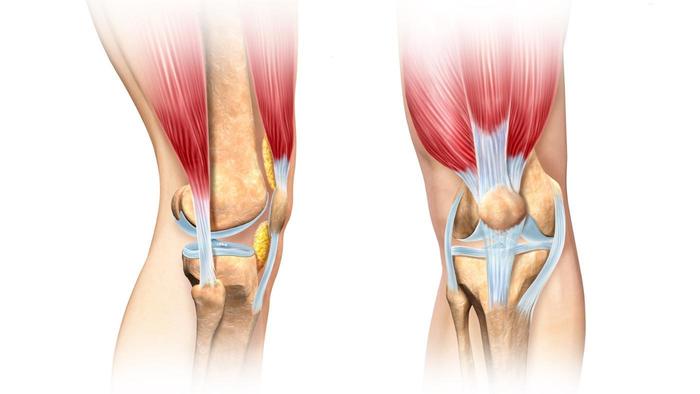What’s the difference between ligament and tendon? Both make up part of the musculoskeletal system; both are made of collagen fibers, known as fibrous connective tissue; and both play vital role within one’s body. The main difference between the two is that ligaments connect bones to bones, whereas tendons connect muscle to bones. Whilst both ligaments and tendons are made of strong fibers, excessive pressure or force can cause serious injury.

General Difference Between Ligament and Tendon
|
Difference |
Ligament |
Tendon |
|
Connections |
Connect bones to bones |
Connect bones to muscles |
|
Classifications |
Classified into three categories: peritoneal ligaments (which form the abdominal cavity lining), articular ligaments (which connect bone-bone) and fetal remnant ligaments (which are present from the time of being a fetus, eventually developing into other ligament tissue). |
Tendons have no further classification. |
|
Injuries |
Torn ligaments and sprains |
Tendinitis, avulsion and tenosynovitis |
To further ascertain the difference between ligament and tendon, watch the following video:
Difference Between Ligament and Tendon: Functions
The Function of Tendons
The main function of a tendon is to connect muscle to bone, which essentially allows us to move. Tendons are the fibers that make this connection.
The Function of Ligaments
The main function of one’s ligaments is to connect bone to bone at the joints, which helps with stabilization of the joints and of the body. One can gradually train their ligaments to stretch and become more flexible, such as when a gymnast learns to do the splits, but overexertion can lead to serious injury. One may have heard the term ‘double jointed’. Individuals who are said to be ‘double jointed’ actually just have extremely flexible ligaments.
Difference Between Ligament and Tendon: Injuries
Ligament Injuries
- Causes
Injury to one’s ligament can be caused by strains or sudden forces exerted upon one’s ligaments, causing them to rupture. Stretching one’s ligament past a certain point can also cause an irreversible change to the structure.
- Symptoms
If one was to damage their ligaments, then they would most likely experience some degree of pain at the affected area. The amount of pain depends on the severity of the injury. One may also notice inflammation around the area. A ligament that is prone to injury is the anterior cruciate ligament (ACL) which resides within the knee. Many athletes injure this ligament during vigorous activity. With this injury, one may experience their leg ‘give-way’, along with pain and inflammation.
- Treatments
Knowing the difference between ligament and tendon is important to determine what treatment is needed. If you suspect that you may have injured your ligament, then it would be most advisable to pay a visit to a health care professional to assess what has occurred and attain proper treatment. In most cases, injuries such as these can be effectively treated with the use of supports and braces. In more serious cases, surgery may be required to correct the problem.
Tendon Injuries
- Causes
Much like ligaments, excessive force or pressure can cause injury to one’s tendons. A tendon which is prone to injury is the Achilles tendon which connects the heel to the lower leg muscle. Injury to this tendon can be caused by over-staining or the use of improper footwear during exercise or vigorous activity. Tendonitis is a common tendon injury whereby one's ligaments become inflamed.
- Symptoms
As with injuries to one’s ligaments, an injury to the tendon can cause pain and inflammation, as well as stiffness. The extent of the symptoms depends greatly on the severity of the injury. If one’s ligament is slightly torn, he may experience slight pain and inflammation and the injury should soon heal. If one’s tendon was to completely snap, then the pain experienced would be far more severe, leading to impaired movements and possibly permanent damage.
- Treatments
If you believe you have injured your tendon, the best action is applying ice to the affected area to help reduce inflammation. The use of a brace or support would also be advisable to provide extra support to the injured tendon. To avoid injuries to one’s Achilles tendon, ensure to wear proper footwear when exercising or performing vigorous activity. Your health care professional will help you ascertain exactly what has been injured and what treatment would be most advisable via the use of an X-ray or MRI.
- Notes
Due to the similarity between ligaments and tendons, it can be extremely difficult to differentiate between an injury to a ligament and to a tendon. In many cases, an X-ray will be carried out. Whether you have injured your ligament or your tendon, seeing a doctor as soon as possible to treat the injury is important to prevent any further (and possibly irreversible) damage.
